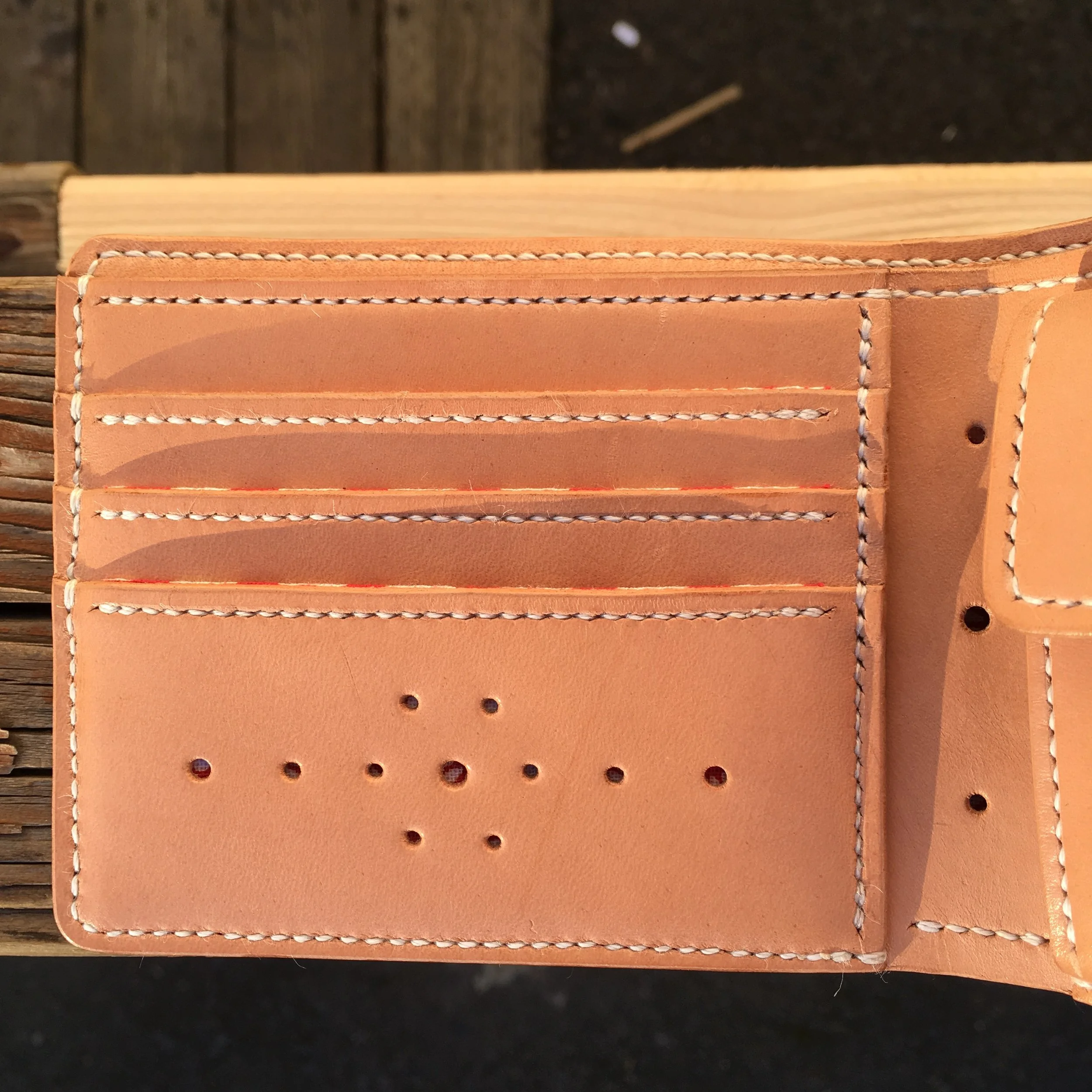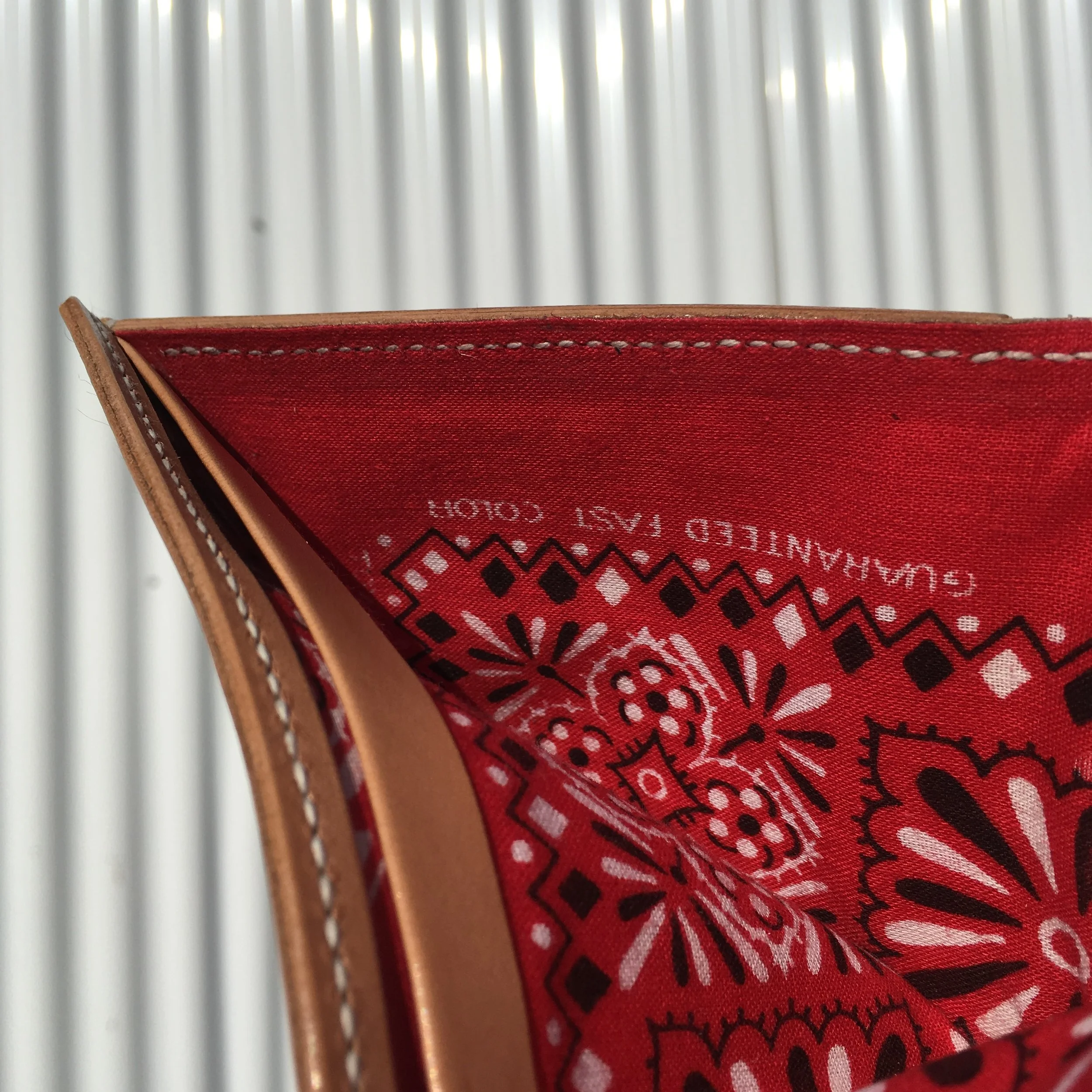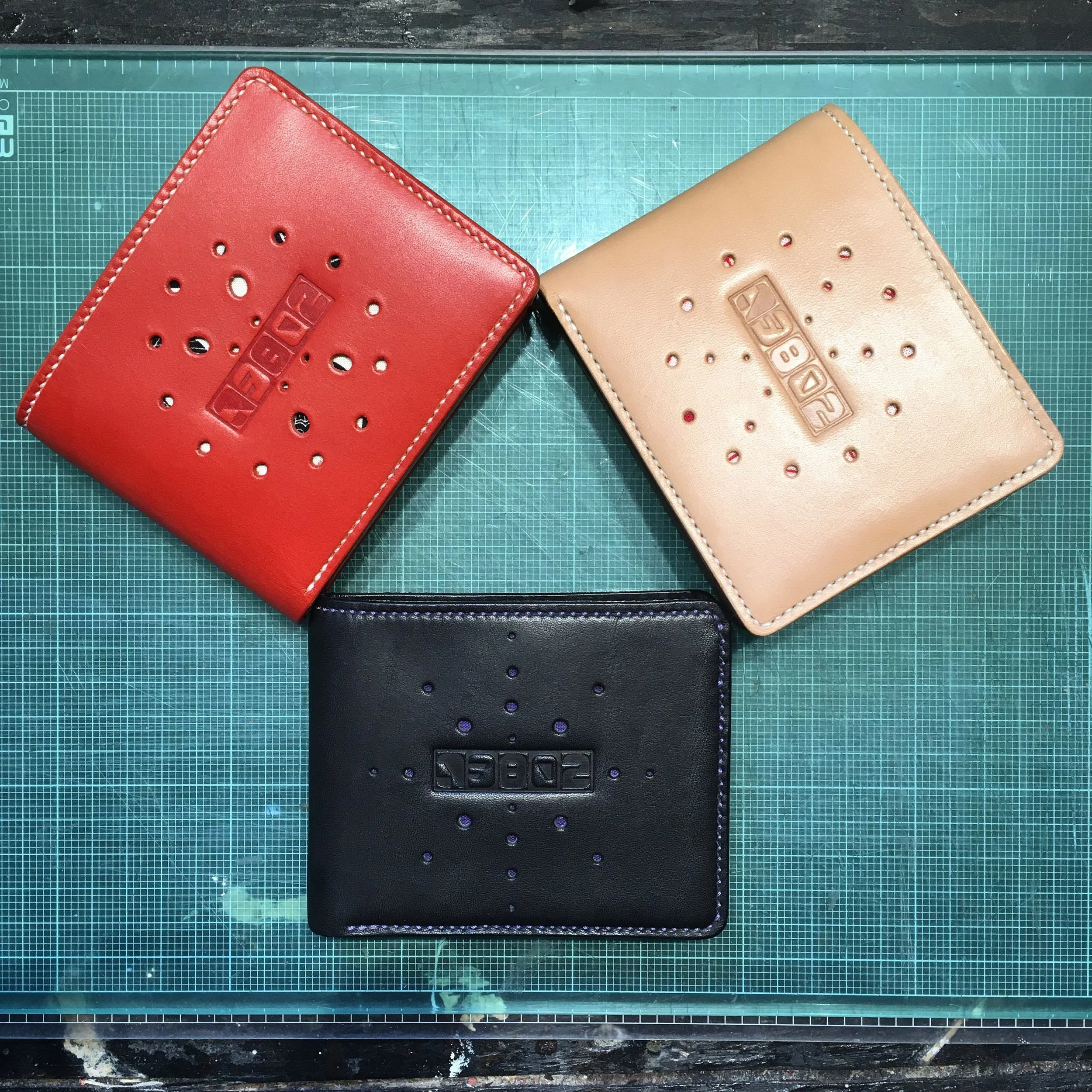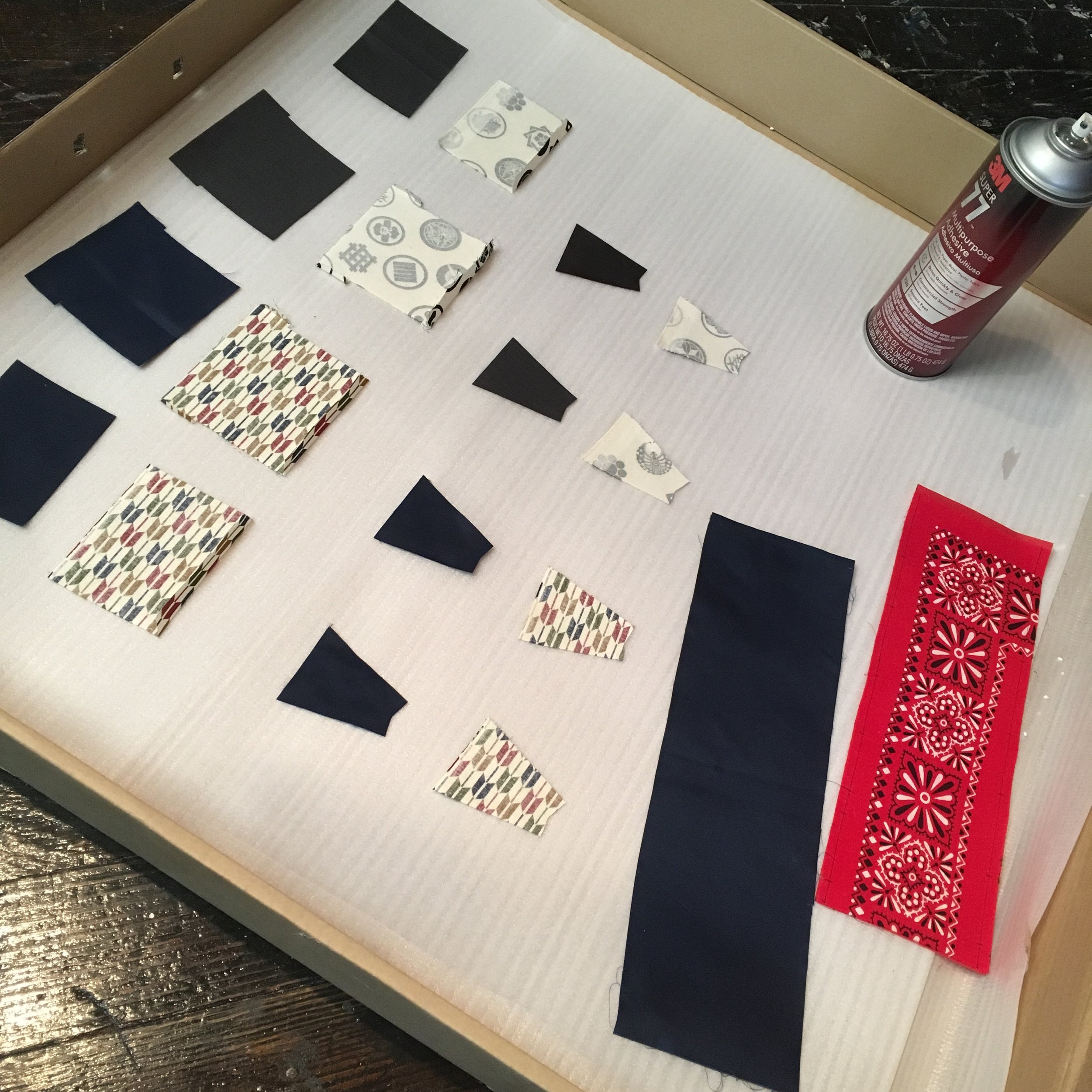It's not what's IN the wallet, it's what's in the WALLET.
Definition of a wallet: Pieces of quality vegetable-tanned leather that have been hand-stiched together to form a number of pockets and an outer shell, fully lined with a bandanna or similar 100% cotton fabric (preferably selvage), with a pattern of holes providing a glimpse of that lining. - POINT73802
The innards of a Type A wallet showing a close-up of the saddle stitch that keeps things orderly.
Hand-stitched
No matter which model wallet you select, there is one feature that remains constant: the main body is always hand-stitched. Ninety-nine percent of the time it's with medium weight all-natural Japanese linen thread. The stitch used, called a "saddle stitch," is renowned for it's strength and anti-fray resilience. Even if the thread eventually wears thin in a spot, the rest of the stitch is not compromised as each one is locked in place as the thread weaves in and out. It's a lot more time consuming than a sewing machine, but the benefits outweigh the higher cost. Type A wallets have the most hand-stitching, with Type B having slightly less, and Type C having the least.
The selvage edge from a vintage Tower bandanna (RN 13960) used as the lining in a Type A wallet.
Lined, selvage edges
As they say, "Inside every .73802 wallet, there's a selvage lining." Well, maybe not, but they should! For me, a wallet doesn't feel complete unless it has a lining. My original idea was to combine my love for vintage bandannas and leather. So I took a vintage, uncut bandanna block I found on Ebay (that had sun fading in areas, which justified cutting it up...) and went to work, making sure to incorporate its selvage edge. Since then, I've expanded to include other 100% cotton fabrics and, more recently, Japanese TENUGUI (手ぬぐい), which is a rectangular-shaped piece of cotton fabric that also has a selvage edge on both its long sides. (I have experimented with Japanese selvage denim as well, and have incorporated it in the construction of a new line of zip pouches! Click here to see the collection.)
Variations in hole-punched patterns as seen on wallets in the Nippon Limited series.
Perforation
What good is a lining if it can't be seen? My father gave me his old D-ring belt he had gotten from a "head shop" (his words) in the late 60s. The leather was old and soft (even cracking), but two things caught my eye - The amazing patina and the simple perforated flower-like design on the tip. Using the two sizes of hole punches I had (the ones I used to set rivets for the guitar straps' leather ends I had been making), I began messing around with design ideas. I thought it would be really cool if the bandanna, in a contrasting color, could be seen from the outside of the wallet through the holes. It was good, but there wasn't enough variation using only two sizes, so I then started gathering multiple sizes (and even some ovals), and suddenly the options seemed limitless! To make a good pattern - one that has balance, is pleasing to the eye and is appropriate in the context - however, takes planning and effort. Currently, I have about five circular ones that I really like and use, a square/rectangular one, and an arrow-shaped one (the arrow design only being available on the Type C "Slimline" wallet).
Cotton fabric about to get reinforced with rip-stop nylon.
Reinforcements
While the outside of a wallet encounters the majority of abuse, the lining eventually gets torn. Because of the natural strength of leather, and it being comparatively thicker, the lining is usually the first thing to give out. It's true, synthetic fabrics are typically stronger, but I choose to use 100% natural cotton for the liners because I prefer how they look and feel. (And all vintage bandannas as well as tenugui are only cotton.) To make them stronger and ultimately last longer, I spray-mount ripstop nylon to the back of the cotton material used for the card slots and coin pockets (if applicable) and between the material used for the center divider. It's an extra step, but I feel it is well worth it as it will last a really long time.
Note: Only available on Type A and select Type B wallets. Current production Hav-a-Hank bandannas used in Type C wallets are made of rather heavy, tightly woven cotton and are heftier than thinner, vintage bandannas.




